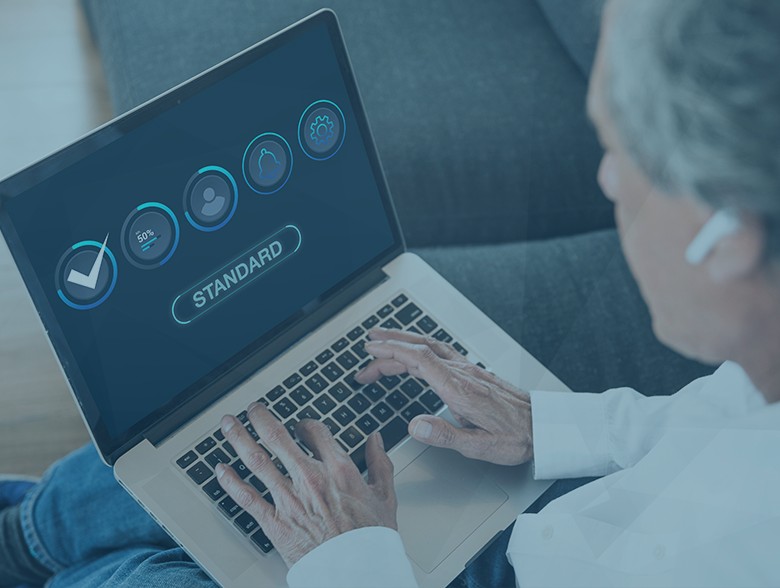By Eric Sugar, President, ProServeIT
In an era defined by the relentless advance of digitalization and the ever-expanding interconnectivity of industrial systems, the realm of cybersecurity has been thrust into the forefront of our collective consciousness. The conventional paradigms of network security — once seen as impregnable — have demonstrated their insufficiency in the face of an ever-evolving landscape of cyber threats. It is within this cauldron of transformation and challenge that a groundbreaking concept has emerged: zero trust architecture (ZTA).
ZTA heralds a profound shift in the way we protect our critical infrastructure and industrial systems. It operates under the premise of zero trust — even within the confines of the internal network — thereby forging a new era in cybersecurity. Understanding how ZTA will influence established principles and practices is essential, as it shapes the irreversible course of industrial cybersecurity.
Decoding zero trust: A paradigm shift in security
For decades, the bedrock of cybersecurity has been encapsulated by the axiom “trust but verify.” This conventional model presupposes trust once a user and their device breach the protective moat of the network perimeter. The belief is that a well-fortified perimeter can, in and of itself, shield an organization’s critical assets and sensitive data. However, the ever-evolving threat landscape has cast a shadow of doubt over this paradigm, laying bare its inherent vulnerabilities.
In stark contrast, ZTA ushers in a paradigm shift under the banner of “never trust, always verify.” It challenges the very bedrock of trust within the realm of cybersecurity. ZTA propounds the audacious notion that trust is a scarce and fragile commodity — one that should not be granted solely based on position or credentials. Instead, it insists that trust must be continually earned through the verification of identity, security posture, and behavior.
The fundamental principles of zero trust can be distilled into several key tenets:
- No implicit trust: In ZTA, trust is never assumed based on the location or network access of a user or device. Whether a user or device resides inside or outside the network perimeter, the default posture is one of skepticism. This shift in mindset represents a profound departure from traditional security paradigms.
- Continuous verification: Trust, in the zero trust model, is a dynamic state. Users and devices must continually substantiate their legitimacy and security status, rather than relying on a one-time authentication process. This dynamic approach ensures that trust remains an ongoing commitment, not a one-off concession.
- Least privilege access: Access is granted based on the principle of least privilege, ensuring that users and devices possess only the minimal access necessary to fulfill their designated functions. By doing so, the attack surface is substantially reduced, diminishing potential points of compromise.
- Micro-segmentation: ZTA calls for the division of networks into smaller, isolated segments. This strategic move curtails the ability of attackers to laterally move within the network, serving as a formidable deterrent against the repercussions of security breaches.
- Identity-centric security: Identity and access management (IAM) assume paramount significance in the realm of zero trust. Robust IAM systems guarantee only authorized individuals gain access to specific resources, bolstering security at its very core.
- Multi-factor authentication (MFA): MFA is an integral component of the zero trust framework, adding an additional layer of security by requiring multiple forms of authentication. This multi-pronged approach heightens the level of difficulty for unauthorized users seeking access.
- Continuous monitoring: Real-time surveillance of user and device behavior plays an indispensable role within the confines of ZTA. Swift identification of any anomalies or deviations from established baselines is crucial, enabling a rapid response to potential security threats.
By transitioning from a trust-based security model to one centered on continuous verification, ZTA significantly reduces the attack surface, rendering it more arduous for malicious actors to infiltrate networks and compromise critical assets. Furthermore, this approach aligns harmoniously with compliance requirements and regulations, providing organizations with a proactive strategy for shielding their digital assets.
Embracing ZTA
Implementing ZTA successfully requires meticulous planning and precise execution. To embark on this journey, organizations must undergo several critical phases, each designed to bolster their cybersecurity defenses and enhance their overall security posture.
- Data and asset classification: It begins with a thorough classification of data and assets based on their criticality and sensitivity. This step allows organizations to establish tailored protections for different access tiers. By distinguishing between mission-critical and less-sensitive assets, organizations can ensure that their defenses are aligned with the true value of each resource.
- Network segmentation: Within the zero trust paradigm, network segmentation is a pivotal strategy. This approach entails the division of the network environment into zones with well-defined boundaries. These boundaries serve as an effective deterrent against lateral movement by malicious actors, as they hinder unfettered traversal within the network.
- Robust user authentication: User authentication takes on an entirely new significance within the realm of zero trust. Employing single sign-on MFA systems becomes imperative. These mechanisms enhance identity assurance in accordance with zero trust principles, ensuring that only authorized individuals gain access to the network.
- Access orchestration: Automated provisioning and deprovisioning play a pivotal role in minimizing the attack surface. By orchestrating access through automated means, organizations can prevent the accumulation of unnecessary access rights. This not only enhances security, but also streamlines user access management.
- Continuous monitoring: Vigilant and comprehensive monitoring is a linchpin of zero trust architecture. Real-time surveillance of all access requests and user activities is essential. Any deviations or anomalies from established baselines must be swiftly identified. Continuous monitoring facilitates proactive responses to potential security threats.
- Regular maintenance: For zero trust to remain effective, standard procedures for regular patching, configuration updates, and access revocation are paramount. This ongoing maintenance guarantees the network environment remains fortified against emerging threats and vulnerabilities.
By adhering to these best practices in architecture and implementation, organizations can maximize the risk reduction and visibility benefits of ZTA within modern industrial environments. The focus is not only on securing access, but on doing so through identity/context-based policies, network segmentation, enhanced authentication mechanisms, and vigilant monitoring.
Pioneering the future of security: Continuous verification and beyond
ZTA marks a pivotal evolution in the realm of cybersecurity, yet the horizon holds even more innovations that promise to fortify protections within industrial environments. One such advancement is continuous verification — a practice that reimagines security through ongoing monitoring and analysis.
Continuous verification harnesses the power of technologies such as user behavior analytics and endpoint detection and response. By continuously scrutinizing patterns and anomalies, it enables real-time threat identification based on changes in user or system behaviors. For instance, unusual usage of credentials from an atypical location or device can trigger an alert. This proactive approach supersedes periodic compliance checks and audits, adding a dynamic layer of security to the network.
Peering further into the future, the advent of technologies like AI, machine learning, and automation promises to transition industrial cybersecurity from passive defense to active prevention. These technologies, when employed, could autonomously predict, detect, and block attacks in real-time. Human security teams would shift their focus towards strategy, governance, and complex response, in turn enhancing overall security and incident response capabilities.
The future of industrial security is destined to embrace a holistic risk-based approach that spans the realms of IT, OT, IoT, and physical systems. As environments become more interconnected and complex, siloed security measures will no longer suffice. The convergence of identities, devices, networks, clouds, and applications will require unified cyber-physical protection, offering a comprehensive and coordinated defense against multifaceted threats.
While challenges remain on this visionary path, innovations like zero trust, continuous verification, and AI-driven automation portend an era of rapid threat detection and automated prevention. By preparing today, industrial organizations can position themselves to embrace the future of cybersecurity and resilience. This forward-looking perspective ensures that they remain at the vanguard of security, ready to adapt to the ever-shifting landscape of cyber threats.
About the Author
 Eric Sugar is the President of ProServeIT. With over 20 years of experience working in the information technology and services industry, he cares deeply about helping businesses become digital and maintaining digital data security.
Eric Sugar is the President of ProServeIT. With over 20 years of experience working in the information technology and services industry, he cares deeply about helping businesses become digital and maintaining digital data security.


